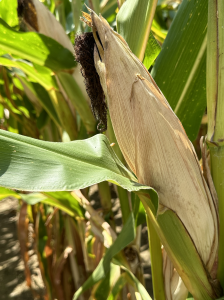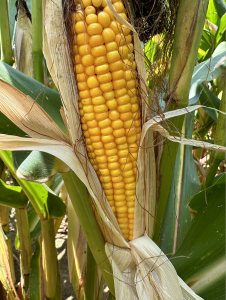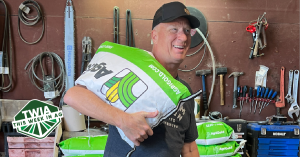Farmers waiting on a summer market rally must feel like teenagers waiting by the phone to be asked to the dance. Only their prospects are much dimmer. Capitalizing on summer rallies is how many farmers base their marketing plans. When you chart commodity prices throughout this century, highs typically spike during the summer months. That’s because markets respond to uncertainty and risk speculation, such as weather events, geopolitical events or shortages in South America production. And summer is often the time when vulnerability and doubt seeps in. But that’s not been the case this year.
What is certain is that US farmers are set to produce a whole lot of grain in 2024. But that’s only part of the problem. Even more concerning is the amount of old crop grain that farmers are storing from last year. Reports indicate that one-third of last year’s corn crop is still in their bins. Harvest has already begun in the deep South and combines will be rolling throughout the Heartland next month. Look for the market to become flooded with grain, as farmers must clean out their bins to make room for #Harvest24. This would effectively mitigate any potential rally, and most likely further down spiral the already depressed markets, where fall delivery has fallen to the mid $3s for corn and below $10 for soybeans.
Negotiating lower cash rents is frequently cited by the so-called experts as a tactic farmers can use to lower costs during tough times. I tend to chuckle at this notion. It’s great in theory, until you feel Adam Smith’s invisible hand pushing down. Sure, in some cases you may have a loyal and compassionate landlord who is willing to feel your pain. I had one of those. But much of the rentable farmland is owned by widows and retired people on fixed incomes. The current economy isn’t doing them any favors either. Competition for land is fierce in many parts of farm country. So if you won’t continue paying top dollar, there are usually others who will. And once you lose a farm it’s very difficult to get it back or replace it. If the landlord won’t budge, the farmer has a difficult decision to make. Do you give up land, since current economic conditions won’t pencil out? Or do you hold on to it in hopes that conditions will improve? How long can you wait? And more importantly, how long will your banker wait?
Immediate financial relief is not coming via lower interest rates. Last week the Fed held firm on rates, but indicated cuts could be announced at their September meeting. The question that begs to be asked is, why wait? Interest rates are at a 20-year high, which has impacted borrowing power. Farmers continue to cite high rates as a major concern and barrier to future investment.
One cost that is coming down for farmers is fertilizer. Both 32% UAN and potash have dropped 15% y/y, and urea is down 13%. The only major fertilizer that’s seen an increase is MAP, up 3%.
Hope for some commodity growers may be on the horizon in the form of 45z tax credits. The much-anticipated tax incentives for biofuel makers – a portion of which should be passed along to farmers – becomes reality on January 1. Problem is, we’re still awaiting rules and guidance from the IRS. CI (carbon intensity) scores figure to be the measuring stick. However, recent 40B tax credit rules regarding aviation fuels mandate that growers must incorporate no-till/strip till, cover crops and high-efficiency fertilizer practices to become eligible. Will the same apply for 45z? Farmers will need time to implement any such practices, with harvest just around the corner. Here’s hoping the IRS releases their guidance soon.
My corn is rapidly approaching physiological maturity. Plants are firing and the husks are turning brown. It should reach black layer this week. The shallow dents atop the kernels are a welcome sight.


Related Posts

This Week in Ag #1
Curly fries, waffle fries, spicy fries or… regen fries? Soon, these may all be choices in the frozen foods aisle, at least if McCain Foods has a say in it. And as the world leader in prepared potato products, purchasing 6.8 million tons of spuds annually, McCain carries a strong voice. Their commitment to sustainability includes a pledge to have regen

This Week in Ag #25
36 years ago, a wide-eyed intern walked into the office of Indiana Prairie Farmer magazine. It was a baptism by fire. Paul Queck, the seasoned editor, told him, “We’d like to have you take a shot at writing what we hope to be the cover story for July. Since you’re only here for a few months, we

This Week in Ag #61
“Free seed can cost a lot of money.” That was dad’s less-than-tactful response to a seed salesman hoping to woo him with a special offer. Was dad exaggerating (as he was notoriously known to do)? Not in this case. Even using today’s financial standards – where seed costs have more than quadrupled in the 30 years

